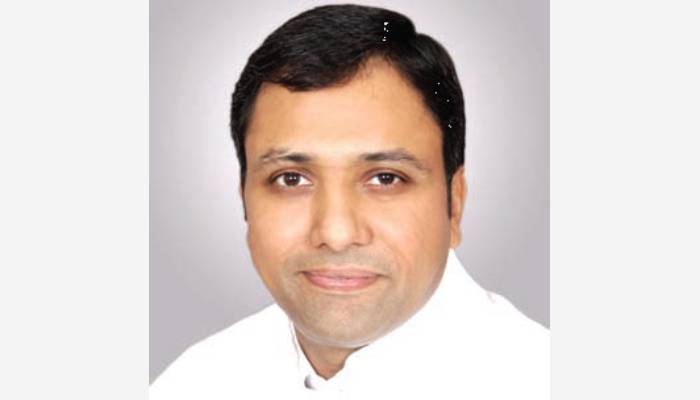
or

The erstwhile Controller of Capital Issues (“CCI”), in an attempt to ensure good quality offerings, used to determine the amount vis-à-vis issues that could be raised, and the price at which the securities ought to be priced. The CCI controlled access to the capital markets and at that time, issues also depended on the ability of the issuers and merchant bankers to convince the CCI of the issue.
The CCI was abolished in 1991 through a Presidential Ordinance. The abolition of the CCI was the precursor to the move to a disclosure based system overseen by SEBI for capital markets. Under the CCI, the completeness of disclosure seemed not to be paramount because it seemed to decide what was right for the market.
Post abolition of the CCI, SEBI ensured quality disclosures, while refraining from judging whether an issue was right for the market. This was a call left for an investor to exercise in his/her/its discretion.
The Securities and Exchange Board of India (‘SEBI’) has notified the General Order relating to Framework for Rejection of Draft Offer Documents on October 15, 2012 (‘Framework’). The Framework, which states that SEBI would start rejecting offerings based on qualitative parameters in the draft offer documents, was issued without seeking public comment.
The Framework, by listing broad qualitative criteria (business model, use of proceeds etc.,), seems to indicate a shift back to the paternalistic pattern of protection during the days of the CCI. While the criteria specified for rejection are merely indicative and not exhaustive in nature, the Framework lacks precision, and the decision with respect to the broadly framed parameters is left to SEBI’s discretion. This discretion to be exercised on parameters that are not disclosure focussed.
The rejection criteria set out by the Board can be classified under the broad heads of
We briefly summarise the key criterion below.
SEBI has the right to reject a draft offer document if it is of the opinion that:

“When we were on the brink of economic collapse, the CCI was abolished and a disclosure-based regime overseen by SEBI was introduced. The markets regulator would set the rules of disclosure and ensured that everything material was disclosed, leaving it to markets to accept or reject a securities offering.”
“Now, through the Rejection Order, SEBI has publicly said that it would sit in subjective judgement over the quality of a securities offering. For example, SEBI may reject an offering if “the business model of an issuer is exaggerated, complex or misleading and the investors may not be able to assess the risks associated with such business models”. Another anomaly is that SEBI may reject an offer document if there is no discernible promoter – directly contrary to its own regulations which, on paper, permit issuers without a discernible promoter to access the market.”
“No one can quarrel with the regulator using its powers to restrain a securities offering when a fraud is detected. However, to sit in judgement about whether a business model is of a good quality is a very different. It heralds a marked shift from a disclosure-based “regulatory regime” to a quality-judged “control regime”. The most laudable of objectives cannot justify an ill-fitting regulatory measure. Each of these measures represents a foundational change in our regulatory policy, taking us precisely the direction we abandoned in 1991.”
A significant anomaly is the rejection criteria based upon the inability to ascertain the ultimate promoters of the issuer. The current regulations do permit, at least on paper, issuers to access the capital markets without a discernible promoter.
The criteria set out above appear well intentioned and seek to protect the interest of the investors. However, in effect, the criterion could be viewed as substituting SEBI’s judgement for the investor’s own judgement of the quality of the issue, and protectionist in scheme.
An issuer’s failure to submit necessary documents required under the ICDR Regulations, or delay in furnishing information could also be grounds for rejection. These seem unduly high penalties for procedural lacunae that can probably be easily remedied.
Further, an issuer’s failure to resolve the conflict of interest between the issuer and the merchant banker will also be an additional ground for rejection of the offer document. This rejection will depend on SEBI’s judgement of whether such conflict of interest affects the merchant banker’s ability to carry out a fair and impartial due diligence of the issuer.
The Framework states that SEBI will base its decision on information relating to the Issuer in the past 5 years from the date of filing or such longer period as SEBI deems fit. The Framework does clarify that themere triggering of any, or a few, of the criteria mentioned would not result in automatic rejection. SEBI will take a final view after considering the materiality of the findings and facts and circumstances of each issuance. How this will work in practice, it remains to be seen.
Entities whose draft offer documents are rejected will not be allowed to access capital markets for at least one year from such rejection date. This period can be enhanced depending upon the nature of transgressions of the entity. The company will not be entitled to seek refund of the filing fees in the event that SEBI rejects a draft offer document or if it is voluntarily withdrawn.
The Framework provides for a one-time opportunity (for one month from the date of the issuance of the Framework) for withdrawal of the draft offer documents pending before SEBI. The “one-time” opportunity seems to be a warning shot fired by SEBI across the bow of all issuers. It’s not only about disclosures any more, but the ability of the issuer to convince SEBI of business imperatives which frankly should be palatable to an investor, and may not necessarily be so to a regulator.
The question one finds oneself asking is whether, if SEBI does not reject an offer document, an investor is to assume that SEBI approves the business model as not being complex or misleading, or that the prospects are not exaggerated, or that the proceeds of the issue are to be expended appropriately?

One of SEBI’s Rejection Order criteria assumes that within Capital Structure the Ultimate promoters are unidentifiable. This has obviously two fold repercussions, where the offer documents filed by companies having untraceable inception promoters can be just rejected on the face of it, on the other hand this may add to woes of the genuine old company cases having unidentifiable first promoters due to too many change in hands. This step of SEBI however does not substitute any of its theory as the concept of checking the chain of history of promoters has always remained on the minds of SEBI.But following this without letting the genuine exemptions may be difficult for Companies.
One can find no fault with a regulator that is mandating more and fair disclosure (and commenting on disclosures) to improve the quality of offer documents, or restraining fraudulent offerings. However, with the introduction of quality based criterion, could disclosures become less relevant? SEBI appears to be heading down a path which seemed to be forsaken with the abolition of the CCI. A path that once led to a starvation of capital and one, which ill fits the growing economy, that is India.
Kartik Ganapathy is a Partner at Induslaw
Pallavi Kanakagiri is an Associate at Induslaw

Lex Witness Bureau

Lex Witness Bureau

Lex Witness Bureau

For over 10 years, since its inception in 2009 as a monthly, Lex Witness has become India’s most credible platform for the legal luminaries to opine, comment and share their views. more...
Connect Us:


The Grand Masters - A Corporate Counsel Legal Best Practices Summit Series
www.grandmasters.in | 8 Years & Counting
The Real Estate & Construction Legal Summit
www.rcls.in | 8 Years & Counting
The Information Technology Legal Summit
www.itlegalsummit.com | 8 Years & Counting
The Banking & Finance Legal Summit
www.bfls.in | 8 Years & Counting
The Media, Advertising and Entertainment Legal Summit
www.maels.in | 8 Years & Counting
The Pharma Legal & Compliance Summit
www.plcs.co.in | 8 Years & Counting
We at Lex Witness strategically assist firms in reaching out to the relevant audience sets through various knowledge sharing initiatives. Here are some more info decks for you to know us better.
Copyright © 2020 Lex Witness - India's 1st Magazine on Legal & Corporate Affairs Rights of Admission Reserved